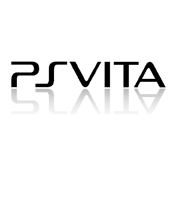Develop 2011: PS Vita is the most developer friendly hardware Sony has ever made
#develop By developers, for developers

There are many things Sony is yet to publicly announce about its forthcoming PS Vita portable console.
Indeed, at this stage, Sony only has five pre-production Vita units available for developers throughout Europe.
However, in a coding keynote talk at the Develop conference, Sony head of developer services Kish Hirani, and senior R&D engineer Neil Brown lifted the corner on some elements.
"The PS Vita is the most developer friendly hardware Sony has ever made," said Hirani, pointing out that all of Sony's R&D departments had been involved in its design, not just a 'bunker in Japan' as has happened previously.
Also, developers had been consulted as early as 2009 in terms of specifications such as the dual sticks.
He went on to demo some of the work that Sony R&D is carrying out in terms of augmented reality gaming. Most significant were examples of markerless games, which don't require you to have a specific marker; typically a paper marker containing printed icons.
HardcoreDigging deeper into the hardware, the Vita's System on a Chip consists of a quad-core ARM Cortex A9 CPU, of which three of the four processors are available for applications. The fourth is used for running the operating system.
The GPU is four core SGX543MP4+ from Imagination Technologies, which is designed to be highly capable at low power consumption.
Multiple threads can run in parallel on each core, and textures can be fetched before shader instructions are run to speed up rendering.
Efficient tilingThe biggest difference between PS Vita and previous Sony hardware is that the GPU uses a tile-based deferred rendering architecture (not to be confused with the deferred rendering technique).
This breaks the screen down into individual tiles, which go through a deferring rendering step in terms of each element being stored in a parameter buffer inbetween vertex and pixel shading at a per tile level.
The advantage of this is that it deals with hidden surfaces that don't need rendering because they are hidden behind other objects closer to the camera. Obviously, this is more efficient as you're rendering less pixels.
And as Brown explained, developers don't have to worry about handling tiles as the system deals with this automatically.
Another interesting feature is the PS Vita uses Shader Model 3.x+, with the '+' standing for special additions to the graphics industry standard that Sony is yet to reveal.
